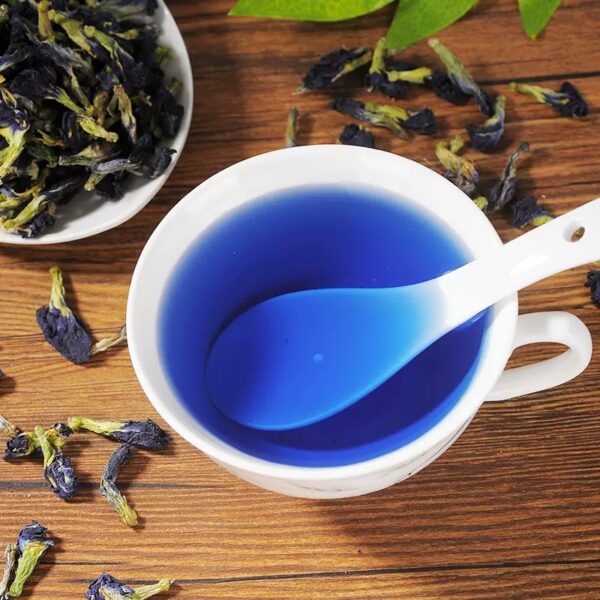
# Blue Tea: A Refreshing and Unique Beverage Experience
## What is Blue Tea?
Blue tea, also known as butterfly pea flower tea, is a caffeine-free herbal infusion made from the vibrant blue petals of the Clitoria ternatea plant. This stunning beverage has been enjoyed for centuries in Southeast Asia and is now gaining popularity worldwide for its unique color and potential health benefits.
## The Origins of Blue Tea
Native to tropical regions of Southeast Asia, blue tea has been a staple in traditional medicine and cuisine for generations. The butterfly pea flower, which gives the tea its distinctive hue, grows abundantly in countries like Thailand, Vietnam, and Malaysia. Historically, it has been used in Ayurvedic medicine and as a natural food coloring.
## Why is Blue Tea Blue?
The mesmerizing blue color comes from anthocyanins, powerful antioxidants also found in blueberries and blackberries. What makes blue tea particularly fascinating is its ability to change color – adding lemon juice or other acidic ingredients turns the beverage purple or pink due to the pH-sensitive anthocyanins.
## Health Benefits of Blue Tea
1. Rich in Antioxidants
Blue tea contains high levels of antioxidants that help combat free radicals and may reduce oxidative stress in the body.
2. May Support Brain Health
Some studies suggest that compounds in butterfly pea flowers may enhance memory and cognitive function.
3. Potential Anti-Inflammatory Effects
The tea’s active compounds may help reduce inflammation throughout the body.
4. Caffeine-Free Alternative
Unlike traditional teas, blue tea contains no caffeine, making it an excellent choice for those looking to reduce their caffeine intake.
## How to Prepare Blue Tea
Making blue tea is simple:
- Steep 5-10 dried butterfly pea flowers in hot water (about 200°F or 93°C) for 5-7 minutes
- Watch as the water transforms into a deep blue hue
- Strain and enjoy plain or with honey, lemon, or other flavorings
## Creative Ways to Enjoy Blue Tea
Color-Changing Cocktails
Mixologists love using blue tea as a base for cocktails that magically change color when citrus or other acidic ingredients are added.
Iced Tea Variations
Chilled blue tea makes a refreshing summer drink, especially when combined with mint, ginger, or tropical fruits.
Culinary Applications
The natural blue pigment can be used to color rice dishes, desserts, and even cocktails without artificial dyes.
## Where to Find Blue Tea
Blue tea is becoming increasingly available in health food stores, specialty tea shops, and online retailers. Look for organic, high-quality dried butterfly pea flowers or pre-packaged blue tea blends.
Keyword: blue tea
## Final Thoughts
Blue tea offers more than just a visually stunning experience – it’s a versatile, healthy beverage with a rich cultural history. Whether you’re looking for a caffeine-free alternative, a natural food coloring, or simply want to try something new, blue tea is worth exploring. Its unique properties and potential health benefits make it stand out in the world of herbal teas.